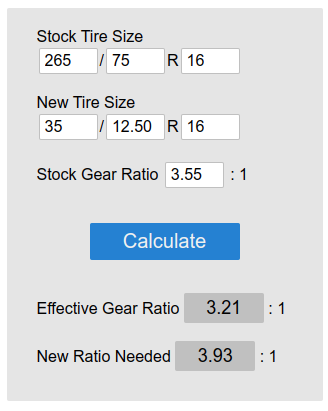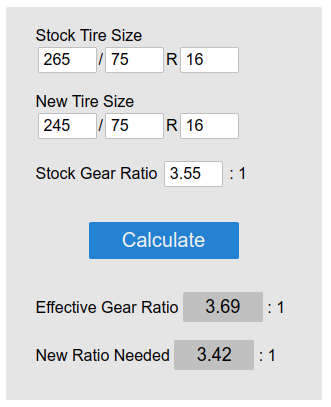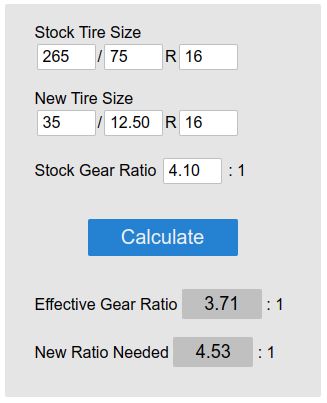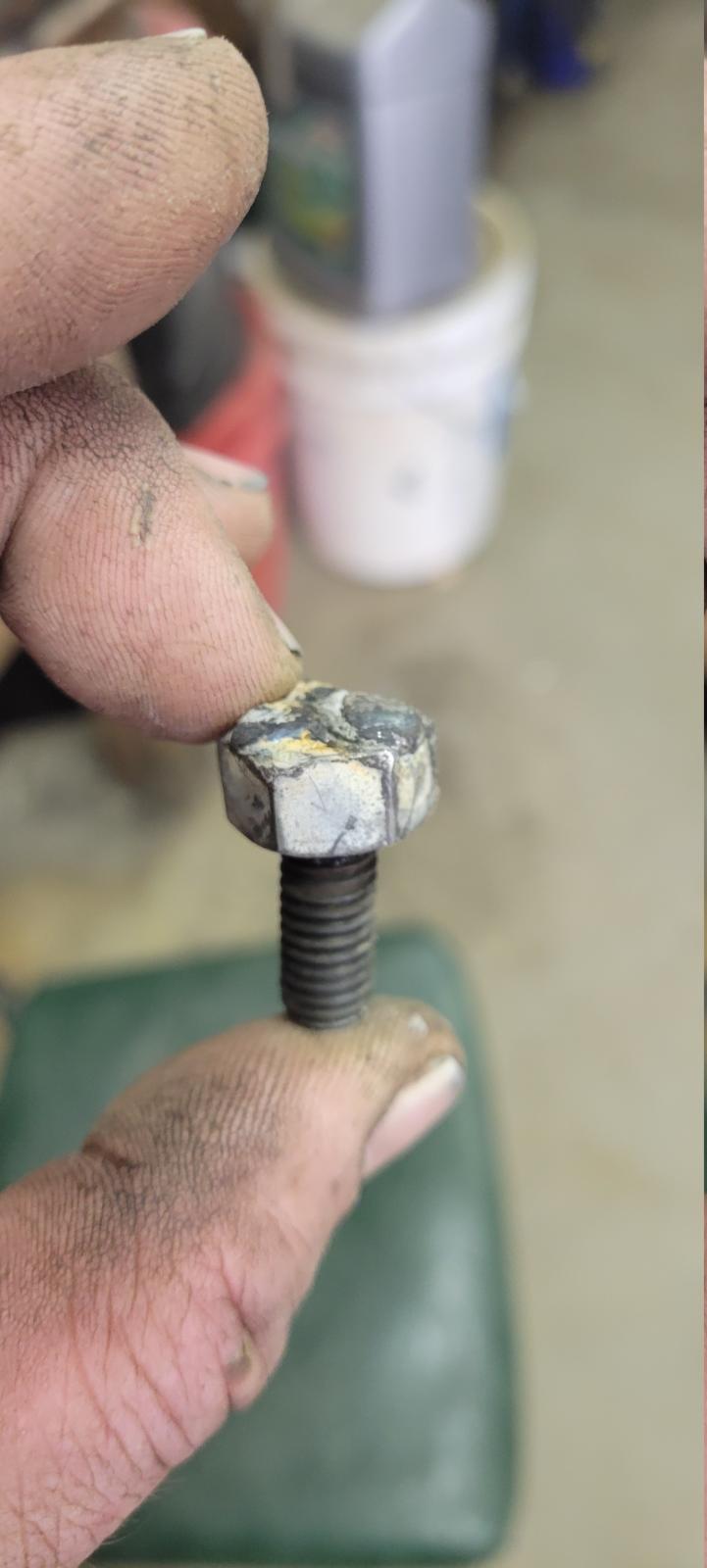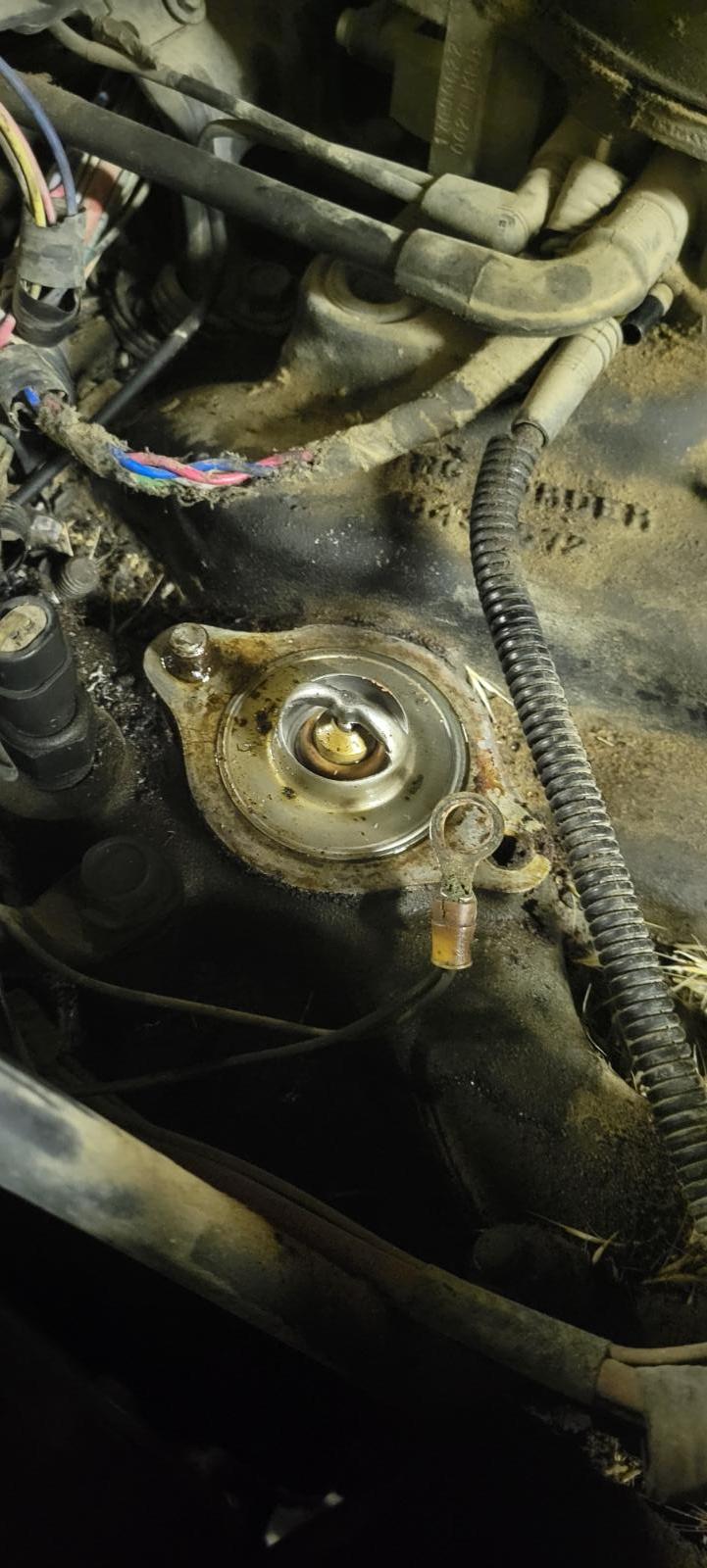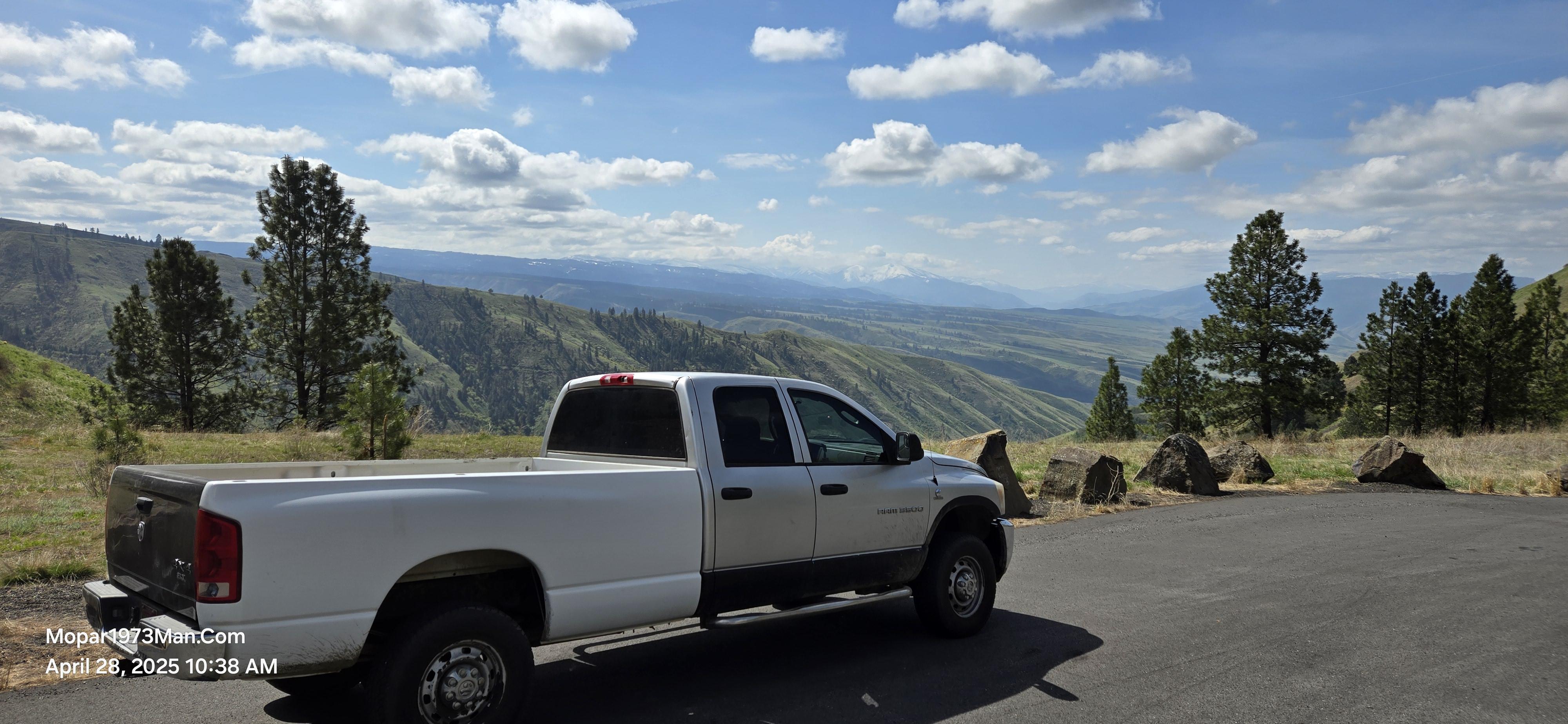
Everything posted by Mopar1973Man
-
Injector Brand Choice
That's about it. Nothing that will truly change the angle or change the size of the tapered fitting. If its marred or pitted your going o have to replace that one line at least. I had this problem with the fitting at the crossover tubes with them weeping all down the back of the engine.
-
Injector Brand Choice
When doing injection lines 3, 5, and 6 should be tighten first without the 1, 2, and 4 even installed there is plenty of room. Since your leaking at that 3, 5, and 6 lines I would pull them and closely inspect them again. All it takes is a rust pit or crush mark to weep.
-
Injector Brand Choice
Same I do my lines by feel. You can loosen till it misses and tighten again. I usually add a bit more to ensure seal.
-
Who's ready for warmer weather?
Warmed up here enough to make the yard muddy yesterday. I'll be glad when it's above 32F at night. im bracing for single digit nights soon.
-
what controls the "wait to start light"
In a nutshell it is correct. Only difference I might check the black probe directly to the alternator case.
-
Anyone here run Gloshift gauges?
After doing gauge for others and have to install twice because of low quality gauges. I would only go back to ISSPro, Autometer, Steward Warner, and a few other quality names. I installed a trans temp in the 96 Dodge I sold was also a Glowshift gauge and I hate to say it but it was poor quality as well.
-
Injector Brand Choice
Use a speedometer app. I've got one on my cellphone for customers trucks with big tires being I don't speeding tickets driving a customers truck for test drives. Dodge Dealers are rather under educated at times when I've got to teach them how to run the DRBIII tool and flash high idle to ON. Most are clueless and don't know or don't care to do the job. About $4,000 the last gent I told to swap out (McCall ID)and he was running 37's on 3.55 gears. His final with 3.55 gears was 3.07 final. Then after the 4.10 swap it was 3.51 final.
-
Injector Brand Choice
Keep in mind any tires for the 3.55 gear have to be smaller that 265/75 R16 to perform well for economy or power performance. Cummins ISB engine are best suited for 3.55 to 3.73 final gearing to the ground. So there is no amount of tuning that will make your combo work good. Now with my setup with 245's tires and 3.55 gear will a 3.69 final ratio I'm cruising 66 MPH at exactly 2,000 RPM. Way good for towing heavy trailers I'm in the middle of the torque curve and always cooler EGT's wise. My normal 65 MPH empty EGT is 550*F typically at about 1 to 2 PSI of boost on my economy tune. I'm going to inform you that your final ratio is going to be too low and the EGT's will be high. 3.21 final ratio is not going to perform at all for you. Now compare to what I'm setup as... 3.69 to 1 final ratio is going to get the 28 MPG but your 3.21 is going to be low RPM and hot being the RPM will be too low for optimal running. Now if you had the gears in the axle swapped to 4.10 then you would almost have 3.73 gears it would be 3.71 for a final ratio. Like Thor (2006 Dodge) is also a 3.73 geared truck and slightly higher at 2,200 (or so) at 65 MPH. Also keep in mind the bigger tires have more rotational mass and take even more energy (fuel) to spin them up to road speed. This is why a small tire will always win here being its lower in rotational mass, better final ratios, lower rolling resistance...Which bigger tires have higher rotational mass, crappy final ratio, higher rolling resistance.
-
Injector Brand Choice
Hmmmm.... Some one is following my lead eh?
-
what controls the "wait to start light"
Presto, chango... Moved to 24V Powertrain forum. In a nutshell if the WTS is not on... The ECM did NOT boot up yet and having errors during boot up.so it keeps trying till the ECM boots up fully. Boot up time should be instant with the key so if the WTS light isn't coming on then the ECM is going south for sure. Cause: Most likely don't have the W-T ground wire mod and have excessive AC noise from the alternator which typically cooks the chips in the ECM. In this case its messing with the EPROM that stores the code for the ECM so when power is ON the processor boot strap request the data stored in the EPROM the actual run code. The first instruction of code is to check for IAT temps and turn on the Wait To Start and the grid heater if needed. So you going to need to do AC noise check and most likely replace the alternator. Then do the W-T ground wire mod, then send the ECM to @Auto Computer Specialist to be rebuilt. You can then notify the staff that you already replaced the alternator, W-T ground wire mod and other mode to insure no future damage which they will ask about. So get that done first thing.
-
Something to mess around with
Tell you the truth I love hanging around the older people and listen to the tales and knowledge of the past. So many things I've learned from just listening to older folks tell stories about working back in the day and how they survived. Like out here most of the old timers I talk to are original families that moved here to Idaho back in 1890's when settling for land. Talk to grandmother and grandfather which were children during these times and learn about all ways. So very cool to even understand how rough it was... As for you sir my hats off to you and your knowledge as well.
-
In Parma, ID working on a 90 Chevy
So got the stud out of the manifold. Team effort and welded a nut on the remaining stud and twisted right out with a wrench. Needless to say the job is not quite complete and had to come home for other jobs and get more tools for the next one back there was the power steering hose. (pressure). The nut on the steering box is wedged in so tight I can't move it. So take a dremel tool and cut the steel tube out of the top and then use a socket and impact gun to remove the remaining nut and tubing tip in the steering box. Then I was warned the I've got more work when I return. I'll have to work on Gary's Ford truck next with a starter issue. Most likely a safety system (clutch safety) or something electrical. Either way I'm managing to still fill my days with work every day. So on that 1990 Chevy I did in 3 days... Steering column tilt tighten the 3 bolts. Replace both master slave cylinders plus the rusted steel tubing from driver side to passenger side for the clutch system. Changed a thermostat which turned into broken stud. REMAINING - Change power steering hose.
-
Winter weather - What do you see where your at?
I know... It sucks for me because I did the road trip down to Parma, ID for 3 days to work and wasted all my good weather day being inside a heated shop down there. Now I've gotta gear up for today going down to Lucile, ID and working outside again.
-
Anyone use solder seal wire connectors?
So very very rare I going to butt splice two wires together. I typically use like blade style crimp (male & female) to join wires so there is a disconnect point as well. I would rather solder and shrink tube if I'm joining wires together but rather use some good lead/tin solder and flux and get a good bite to the wire. I've seen oxidized copper not play well with solder either. Then do the small pull test. I normally only strip about a 1/8 to 1/4 inch of insulation off and tin the ends. Now slip the shrink tubing over and bind the two tin ends together. Afterwards slide the tubing in place and use the heat of the solder iron to set the shrink tubing. Now I've got way less that that long pre made solder shrink setup mine are barely 3/8 to 1/2 inch long with shrink. Hide way better in a loom and hardly noticeable being there is no knot in the wire now. Good example my PCM protection fuse.
-
Winter weather - What do you see where your at?
Not for long we are going back into the freezer here by tomorrow... Single digit temperatures. Ugh....
-
Something to mess around with
Very interesting learn a little about stuff from your side being the old school wrenches and the lamp oil engines really cool... Thank you @wil440...
-
In Parma, ID working on a 90 Chevy
Yup I'm now starting to travel for work some. Hooked up with an old friend and doing work on his 1990 Chevy 350 Pickup. Steering column came loose at the tilt. Then a new hood cable. Getting more complex the master and slave for the cluch needed to be replaced. Bad part thevtubing rust together and broke. Fun installing that line. Now I'm trying to do a thermostat and power steering hose. Sad to say the passenger side bolt on the thermostat broke and the power steering hose to bound up too. Oh fun.
-
Overhead
There was write up on the internet how someone replaced the two light switches.
-
High Fuel Pressure AirDog150
Only thing you don't want to do is draw fuel from then sender basket. Typically much hotter fuel.
-
Injector Brand Choice
DAP you can go with new or used bodies. I've done both with good out come. Then I prefer the VCO nozzle over a SAC nozzle. Then I prefer higher than normal pop pressure over lower than stock that most do.At least my 7 x 0.010 injectors at 320 bar have broke my old MPG record at 28.04 MPG. As for DAP injectors they do perform really good. Turn up the wire tap and you'll have problems holding the tires down.
-
Front end popping noise
More common on lock to lock steering it pops more so on the passenger side.
-
Winter weather - What do you see where your at?
Same here had a few days of 45 to 50F. Now yesterday it was barely 36 and misting rain.
-
99 Dodge Caravan
Yeah I looked at the side of the worn bearing. 4 bolts and bearing comes out. While I'm down in Parma ID working on a customer's pickup I got a shot at 1 bearing for 48 dollars at AutoZone in Ontario, OR. Can't complain.
-
Winter weather - What do you see where your at?
Ugh. I'm tried of just the cold period. Yeah it might be only +20F but that near 100% humidity is nasty just seem to soak right through you at times.
-
99 Dodge Caravan
After having tires replace with fresh rubber I found out I've got a bad rear wheel bearing. Shouldn't be too hard to replace. What tip me off is the change of sound as you lightly rock the steering back and forth at road speed.





